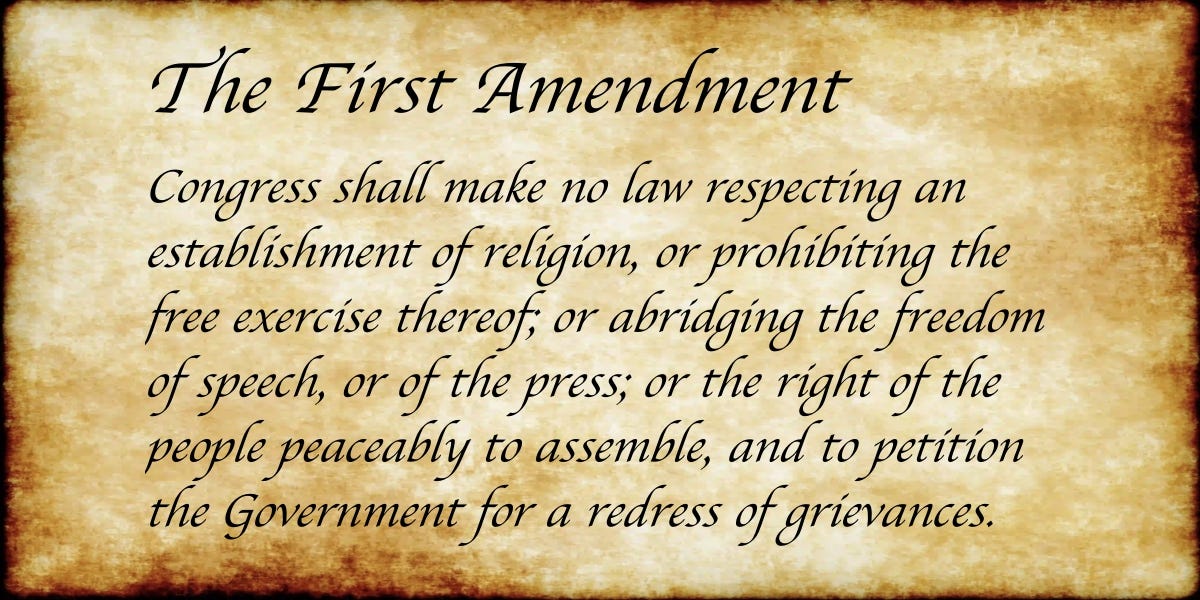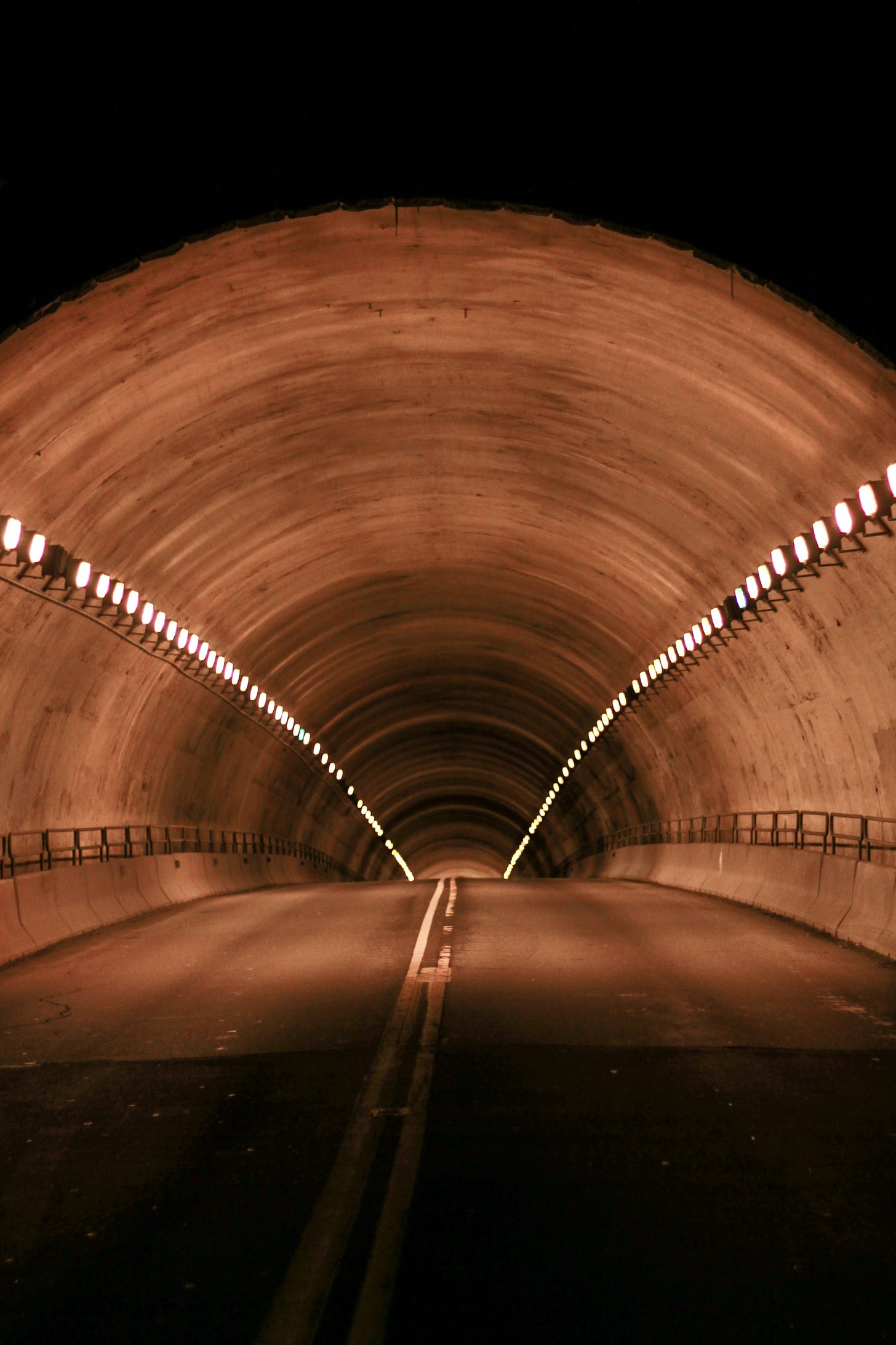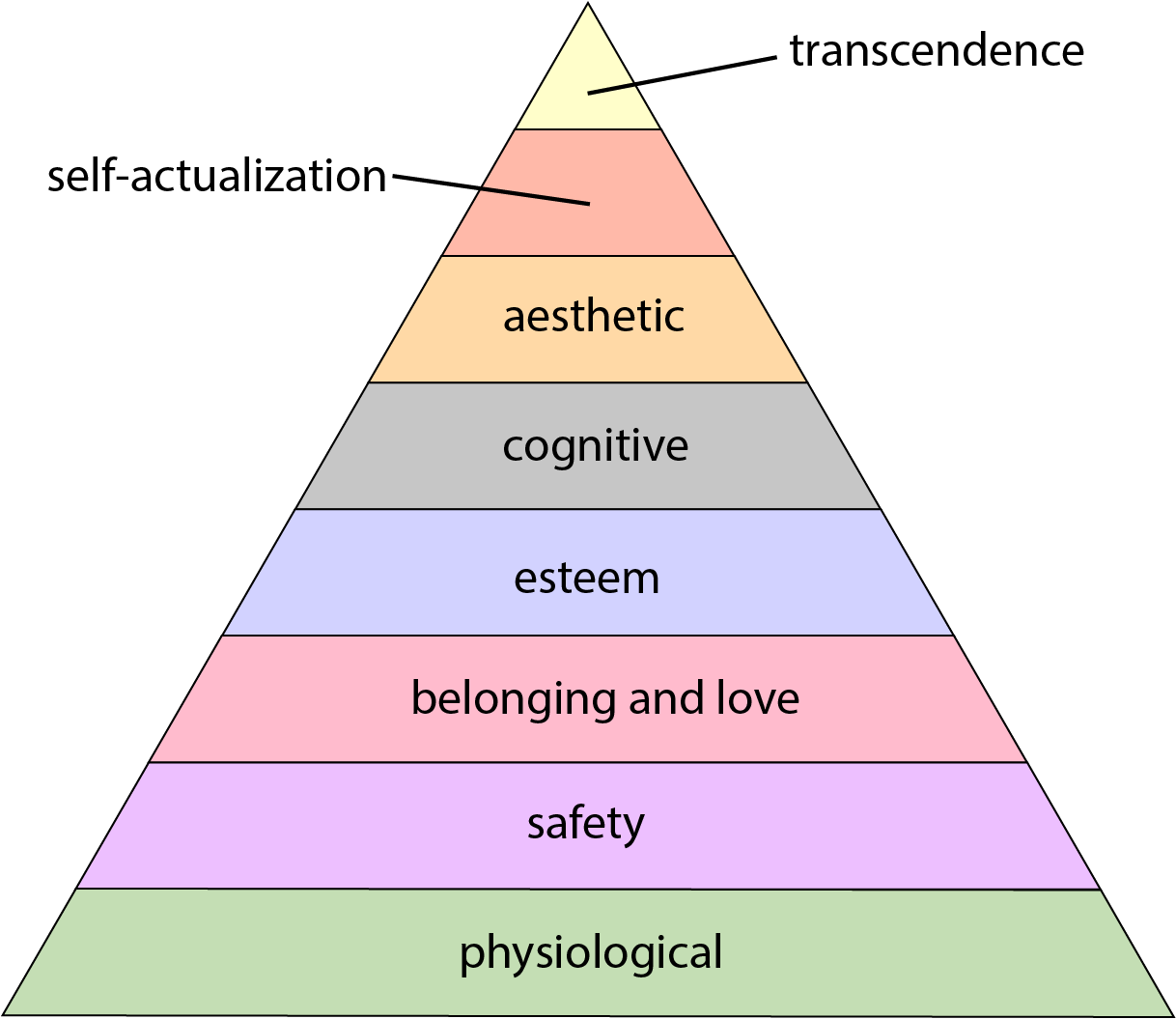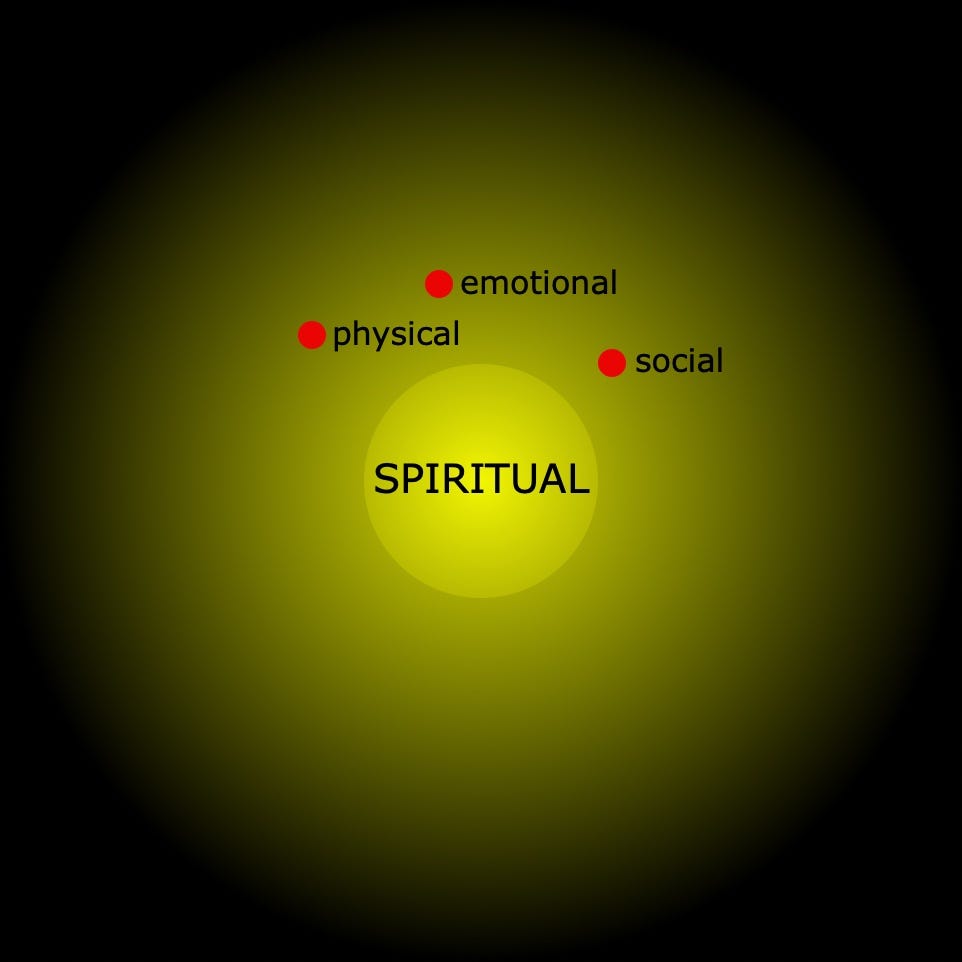The Quality of Life Essentials
A populist lifestyle philosophy with a revised hierarchy of needs...
RESOLVED…
The quality of life is a reflection of how, where, and with whom we invest our faith, our time, and our money…
THE FOUR BASIC NEEDS
The quality of our lives also reflects the extent to which we satisfy our four basic needs: spiritual, social, emotional, and physical. Let’s examine each of them briefly in the general order of their relationships to each other, and how they impact the overall quality of our lives.
SPIRITUAL…
“We are not human beings having a spiritual experience. We are spiritual beings having a human experience.” ― Pierre Teilhard de Chardin
In Western cultures we view ourselves primarily as physical creatures with occasional spiritual manifestations, while many Asian and native Western cultures adopt the exact opposite view: We are, they assert, spiritual beings first and foremost with occasional physical manifestations.
Many cultures view the physical world as a mere subset to the real one, a much larger and embracive spirit world where everything — every animal and tree, every hunt and harvest, every rock and stone, everything animate and inanimate — is imbued with spirit. Nature everywhere is an altar, and the very essence of life itself is spiritual first.
The secularization of Western culture since the Enlightenment has all but eradicated traditional religion as a meaningful force in our lives. Spiritual freedom is no longer deemed an irrevocable birthright conferred upon us by the natural laws of a benevolent and abundant Creator.
Yet we are no less religious today than we were before the Enlightenment. We just pray to a different pantheon of gods. We no longer worship at the church or synagogue or mosque or temple. Today we worship at the alters of Google and Facebook and Amazon and Apple and Microsoft and Netflix and Twitter and TikTok and Climate Change and Anti-Racism and Gender Equity and Perpetual War.
But the quasi-religions of science, technology, academic expertise, entertainment, and ideological cultism are poor substitutes for the real thing. Despite what the false gods and high priests of polytheistic narcissism may profess, there are no freedoms and there are no liberties without the freedom of religion first. Precisely why the free exercise of religion is the very first of the five freedoms enumerated in the First Amendment of the Bill of Rights…
That said, you may rightly observe that there is no mention of freedom per se in our discussion of the four basic needs. But that’s only because freedom is the spiritual birthright of all living things, great and small. Freedom is the most innate manifestation of spirituality. Like matter and energy, we cannot create or destroy it. We typically find it wherever and whenever it is most welcome in our hearts and minds. In the end, only life confers freedom. We can only work to preserve it or surrender it.
As you’ll note below in the Revised Hierarchy of Needs, the other three basic needs — social, emotional, and physical — are all downstream from spirituality, the true driving and guiding force of our lives.
SOCIAL…
In the hierarchy of needs that matter in our lives, our social relationships reside just a hop, skip, and jump due south of spirituality. Indeed, caring relationships with family and friends and colleagues are, like the kindness of strangers, the truest expression of our spirituality.
Up until the turn of the 21st century, up until our state-sponsored default addiction to all things media and all things digital took control of our lives, our corporeal social relationships determined — for the most part — how and where and with whom we invested our time and faith and money. But that’s when everything changed. The sudden assault of digital scale in the early 21st century vastly accelerated the sheer number and impact of institutional relationships in our lives at the immediate and long-term expense of our personal relationships.
Much of the time and attention we once devoted to family and friends we now devote to relationships with remote institutions in addicted fealty to our digital drug lords. The result is profound detachment and isolation from each other in a culture of abject loneliness, despair, and state-sponsored default addiction — with equally profound effects on our downstream emotional and physical quality of life.
EMOTIONAL…
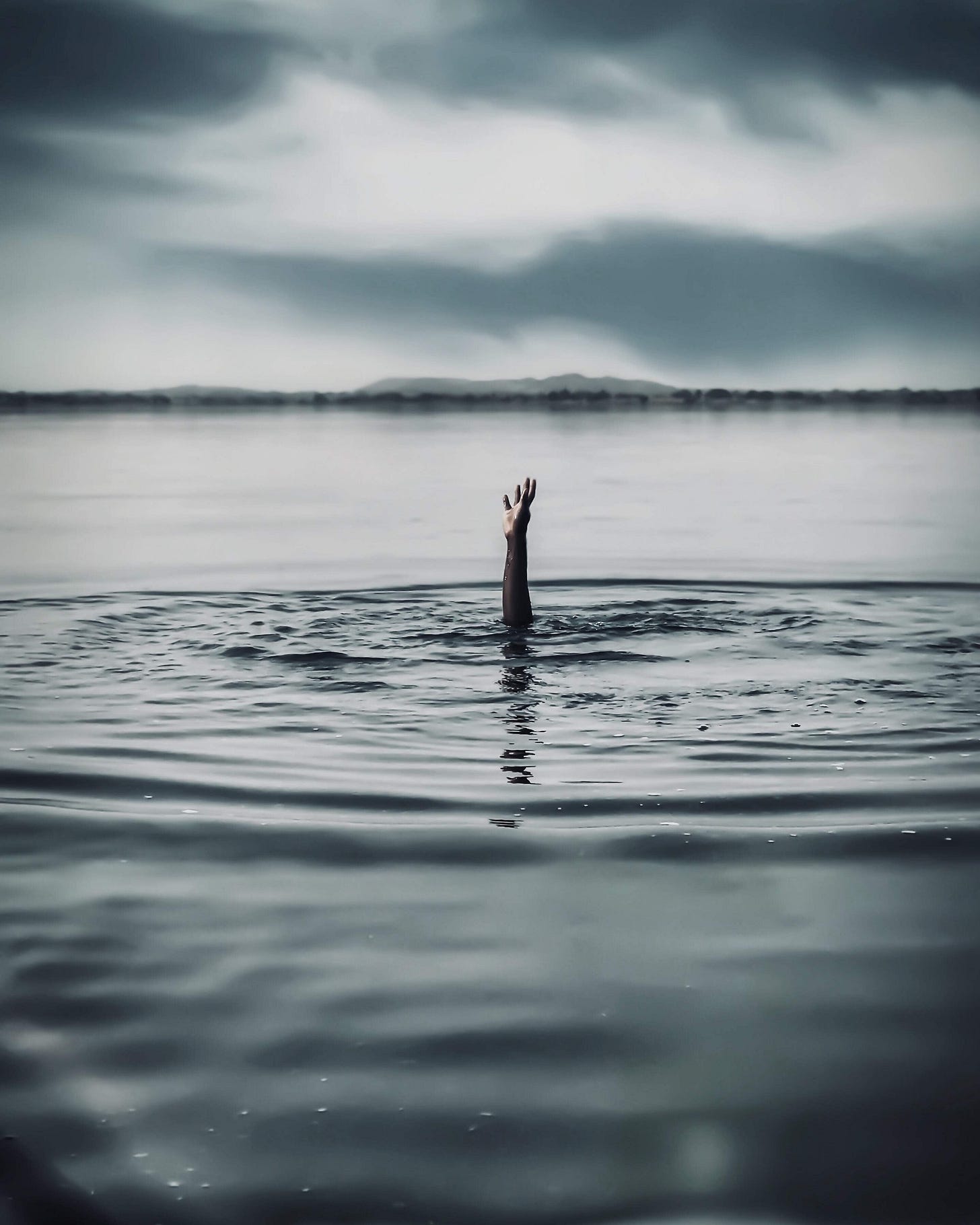
Once upon a time, just a generation or two ago, we were taught not only what to think, but — more importantly — how to think: perhaps our final flirtation with Enlightenment liberal ideals and the Age of Reason.
Today, however, while we are still taught what to think, no one will teach us how to think. Because today there’s no need to know how to think. Today our emotions do the thinking for us. The Age of Reason ended many decades ago, replaced in the 21st century by an era characterized primarily by brute institutional power freed at long last from the moral and ethical constraints of tradition religion.
Independent thought — to the extent it departs from the institutional orthodoxy of identity politics and emotional tribalism — has been effectively orphaned or outlawed. There is no more objective truth. Only how we feel. In the confluence of state-sponsored default addiction and the institutional tyranny of runaway digital scale we have been thoroughly infantilized and emotionally truncated — by design.
We are forever frozen in permanent emotional adolescence, consigned by the confluence of state-sponsored default addiction and institutionally manufactured fear and anxiety to emotionally sealed safe spaces, antiseptic prisons cleansed of any potentially harmful thought. Today, speech is violence. Today, adolescence is a life sentence.
Of course, it’s one thing to think with our hearts instead of our minds, especially back when Our Hearts Were Young and Gay. Quite another, however, to think with our hearts instead of our minds when our hearts in the 21st century are full of manufactured fear and anxiety at digital scale.
PHYSICAL…
It might seem odd to place our physical needs at the bottom of the hierarchy when a simple toothache in the mouth of a general or world leader can change the course of world events. Yet here they are, awash in the toxic jet stream of false gods, dysfunctional relationships, and emotional adolescence.
The 21st century epidemics of addiction, obesity, and degenerative lifestyle-related disease are downstream manifestations of spiritual desolation, social isolation, and emotional trauma. Each of these toxic upstream tributaries empties into the dysfunctional reservoir we euphemistically call healthcare — a system that profits almost exclusively from chronic disease, not health.
We cannot hope to restore our healthcare system until we restore our health, and we cannot restore our health as long as all of our spiritual, social, and emotional garbage keeps flowing downstream. Hence…
THE REVISED HIERARCHY OF NEEDS
Back in the 1940s, American psychologist Abraham Maslow introduced his Hierarchy of Needs, a psychological classification system often portrayed as ascending tiers in a pyramid (although it could just as easily be portrayed in a linear chart)…
Maslow’s hierarchy is entirely consistent with the mechanically Cartesian worldview and scientific methodology that emerged from the Enlightenment and the Age of Reason. According to Maslow, self-actualization and ultimate transcendence are attainable only by satisfying the needs on the lower tiers — starting with the physiological — one at a time. Almost all of Western medicine and science reflects the same basic mechanical philosophy, as do our systemic approaches to social problems like addiction, crime, mental illness — and war.
But like much of the scientific and technocratic advance that characterized and shaped the entire 20th century, Maslow’s vision is all but spiritually bereft. Consequently, it reflects the spiritual and scientific worldview of secularized Western democracies: that we are essentially physical beings with occasional spiritual manifestations. But what — as suggested above — if the opposite is true? What if we are essentially spiritual beings, born spiritually free, with occasional physical manifestations?
If so, we would need to redefine and redraw a new hierarchy of needs, one whose first step begins not with the physiological but with the spiritual. The Revised Hierarchy of Needs might look more like this…
Like its predecessor, the Revised Hierarchy of Needs follows a distinct sequence. In the Revised Hierarchy of Needs, spirituality is like the sun in our solar system: inviolate, self-aware, and discrete from the social, emotional, and physical needs that orbit like planets around it. Like the sun, it precedes them and will survive them. Like the sun, the light it exudes and the gravitational pull it exerts illuminates, permeates, informs, and directs them.
When we close our eyes to the light, however, when we resist the natural pull of our spiritual freedom, our social, emotional, and physical selves are cut loose in the darkness to drift mindlessly like the Titanic in the North Sea — victims of the next wandering iceberg. Without spiritual purpose and direction, our social, emotional, and physical needs often conflict and collide. We find ourselves reacting to crisis after crisis — most manufactured by our own hands.
In the Revised Hierarchy of Needs the only hierarchal rule is spirituality first. And although there is an optimum sequence to our social, emotional, and physical needs as well, the order with which we address them at any given moment is necessarily fluid — subject to circumstance, exigency, the quality of the decisions we make, and the rigor of the rituals we devise to protect and defend them. Regardless of what transpires, however, our spirituality remains the anchor tenant, and the only one of our four basic needs that cannot be broken down or destroyed. Always shining bright within us, we cannot destroy it, no matter how hard we try. Like freedom, it can only be forsaken or surrendered.
The modern historical record is clear: the quality of life suffers in the absence of the sacred. When churches, synagogues, and mosques fail — even and especially in the 21st century — individuals, families, and communities suffer dire consequences: spiritual, social, emotional, and physical.
In the Quality of Life Resistance Movement, all three of our Calls to Action — the call to return our focus to the quality of life, the call to restore meaningful ritual as the key to moderation in all things, and the call for a return to local autonomy — are predicated on our ability to satisfy our four basic needs in compliance with the Revised Hierarchy of Needs.







